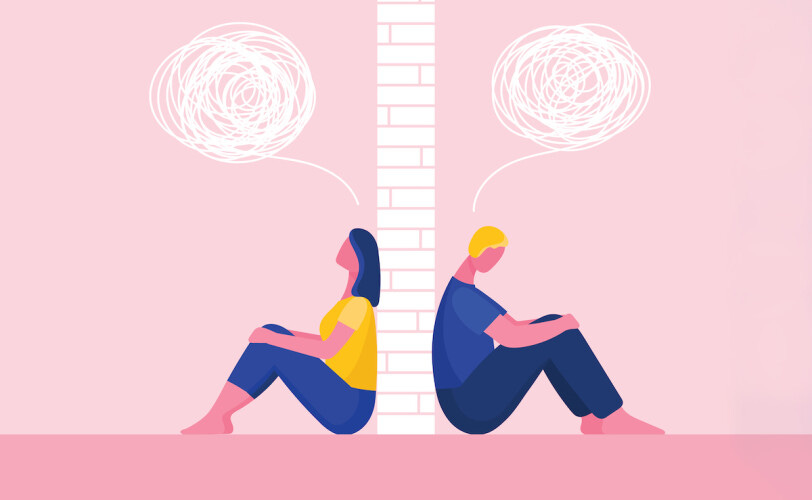The Anxious Attachment Trap: A Neurobiological Perspective
Anxious attachment keeps people caught in a cycle of indirect communication. Early trauma creates neurological patterns where asking for needs feels threatening, requiring gradual behavioral rewiring.
Picture this: A middle-ranked baboon spends its days obsessively grooming an alpha. It brings choice morsels of food, stands guard while the alpha sleeps, and constantly hovers nearby—all without ever directly engaging or asserting itself. When it wants something, it circles, performs elaborate displays, yet never directly communicates its needs. Sound familiar?
As primates, we humans aren't so different. I've spent years observing the neurobiological underpinnings of behavior, and one pattern emerges with striking clarity among anxiously attached individuals: the profound disconnect between their needs and their ability to express them.
The Anxious Loop
The anxiously attached person finds themselves trapped in a maddening loop. They desperately want connection, reassurance, or intimacy, but instead of directly asking, they perform elaborate "relationship backflips"—doing everything possible to be the perfect partner, hoping their needs will somehow be telepathically understood and met.
It's exhausting, ineffective, and neurobiologically fascinating.
The Neurological Origins
What's happening in the brain of an anxiously attached individual? In a word: threat. The amygdala—that almond-shaped chunk of neurons deep in the temporal lobe that processes fear and threat—lights up like Times Square on New Year's Eve at the mere thought of directly asking for what they need.
But why? The answer lies in developmental neurobiology.
When a young primate (human or otherwise) learns that their needs don't matter—through neglect, criticism, or inconsistent care—their developing brain forms neural pathways that essentially code "asking for needs = danger." This creates what behavioral scientists call "learned helplessness," a condition where the organism stops trying to change aversive circumstances because history has taught it that control is impossible.
This isn't just psychological; it's physiological. The nervous system quite literally rewires itself. The hypothalamic-pituitary-adrenal axis (HPA)—our stress response system—becomes hyper-reactive to certain social cues. Cortisol floods the system. The prefrontal cortex, responsible for rational decision-making, gets partially taken offline.
The result? A grown person who can manage a department, run a marathon, or rebuild an engine, but who breaks into a cold sweat at the thought of saying, "I'd like to spend more time together."
The Neurobiology of Entrapment
What's particularly interesting is how this nervous system conditioning creates a self-reinforcing loop. The anxiously attached person avoids direct communication because:
Their amygdala interprets vulnerability as threat
Their anterior cingulate cortex amplifies rejection sensitivity
Their hippocampus readily retrieves memories of past rejections
Their prefrontal cortex, which might override these responses, is compromised by stress hormones
This neurobiological perfect storm leads to the classic anxious strategy: indirect attempts to get needs met through what relationship researchers call "covert contracts"—unspoken agreements where one partner does X expecting Y in return, without ever articulating this expectation.
Breaking the Neurobiological Chains
The way out of this trap isn't easy, but it's neurobiologically sound. The brain exhibits remarkable plasticity—the ability to form new neural pathways through repeated experience. Here's the three-step process:
Discovery: Identify the origins of your learned helplessness. This activates the prefrontal cortex and begins to contextualize amygdala responses.
Awareness: Recognize when the pattern manifests in current relationships. This engages the insula and anterior cingulate cortex, key regions for self-awareness.
Action: Gradually expose yourself to the "threat" of directly asking for what you need. This is essentially a neural retraining program—exposure therapy for your attachment system.
Start small. Each time you directly ask for something and survive the experience, you create a competing neural pathway. Over time, this new pathway strengthens while the old threat response weakens. It's neuroplasticity in action.
The Evolutionary Paradox
From an evolutionary standpoint, this anxious attachment pattern presents a fascinating paradox. In many primate species, direct demands from lower-ranking individuals can trigger aggression from dominants. Indirect strategies sometimes improve survival. But in human pair-bonding, the opposite is true—direct communication enhances relationship satisfaction and stability.
This mismatch between our evolutionary history and our current relationship needs creates precisely the tension that anxiously attached individuals experience. Their nervous systems are responding to ancient threats that no longer apply in the context of modern relationships.
The path forward isn't to override these responses through sheer willpower—that's not how the brain works. Instead, it's about gradually retraining the nervous system to recognize that direct expression of needs is safe, productive, and ultimately, the most efficient path to genuine connection.
And perhaps most importantly, it's about understanding that your brain isn't broken—it's doing exactly what it was trained to do. Now it's time to train it differently.


